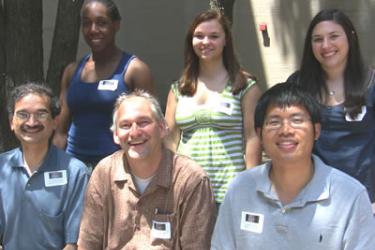
Project Description:
One of the key challenges in today’s medicine is the treatment of organ failure or tissue loss. Advances in cell biology and material sciences have led to tissue engineering where healthy progenitor cells are delivered to the injured site on biocompatible scaffolds to regenerate lost or damaged tissue. This approach has delivered particularly successful results for bone replacement using bone-scaffolds made from CaO-P2O5-SiO2 based glass ceramics. Millions of patients have benefited from implants made from such bioactive glasses.
A macro porous structure of the glass scaffolds is necessary to obtain good implant incorporation through rapid vascularization and bone ingrowth, since such porosity promotes cell growth on the surface as well inside the scaffolds. For additional benefits, the scaffolds should consist of nanopores, which simulate the natural extracellular environment. We have developed two novel methods for fabricating such bioactive glasses based on: (a) conventional melt-quench method followed by selective heating and etching, and (b) a sol-gel procedure with polymerization induced phase separation. In recent months, we have further improvised scaffold fabrication techniques by using nano porous powders prepared by these two methods. The new methods introduce larger macro pores and much greater overall porosity required for bone scaffolds.
In this BDSI Research Project we will fabricate the dual-porous glass bone-replacement scaffolds using the improvised procedures. Next, building on previous experience, the team will commence testing their biocompatibility and bioactivity,by monitoring the colonization and growth of MC3T3 bone-precursor cells. Nano-macro dual porosity glasses with different chemical composition, pore-characteristics, and bioactive coatings will be tested for cell attachment, migration, proliferation, and differentiation. We will also investigate potential detrimental impact of the products of leaching from glass. Appropriate fluorescence-based cell detection methods have been established. Thus, this Summer Institute, in combination with our ongoing work supported by NSF and IMI-NFG will help optimize scaffold fabrication and performance. It will provide the basis for further testing of our glass scaffolds in vivo by our partners at Tissue Engineering Laboratory, Faculty of Dentistry, Alexandria University, Egypt.
Project Year:
2010
Team Leaders:
Matthias Falk, Ph.D., Biological Sciences
Himanshu Jain, Ph.D., Materials Science
Graduate Students:
Shaojie Wang
Undergraduate Students:
Stephanie Eider
Pauline Krzyszczyk
Leslie Smith





